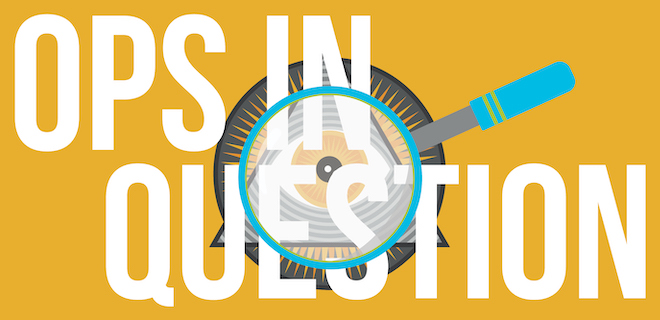
Supply Side Platforms are an integral part of the Real-Time Bidding process. They enable publishers to sell inventory at scale to fill available inventory and ensure they maximize the revenue from impressions.
But, the status quo for SSP protocol is no longer working. According to a new survey from Emodo, marketers crave more innovation and keener targeting and measurement skills from SSPs.
SSPs are beginning to reassess their practices, especially after Yahoo shut down its SSP and other major ones filed for bankruptcy. There is clear evidence that SSPs need to evolve with the times, but how do they make it happen?
“We’ve been hearing a lot of commentary about the commoditization of supply and demand and how brands and agencies have been struggling to understand the value SSPs truly add to the supply chain,” said Damian McKenna, Chief Operating Officer at Emodo. “This survey underscores the key focus areas for SSPs to remain competitive and deliver value for buyers and sellers. While we are focused on all of the above, Emodo is doubling down on innovations around optimization, especially as it relates to targeting, innovative formats, and unique inventory.”
Innovation Over Efficiency
Andrew Byrd : Emodo recently released a study stating that 56% of marketers are demanding SSP Innovation and 53% want enhanced targeting and measurement. Why did you decide to create this study? Were the results what you expected? Did anything surprise you? 
Damian McKenna: There’s a fever pitch surrounding Supply Path Optimization (SPO) to the point where it’s almost talked about too much. We agree that eliminating redundancies and focusing on quality supply is incredibly important, but marketers want more than improving efficiency and removing redundancy. Most marketers we hear from want to deliver something unique, something impactful, and something that speaks to the consumers we are trying to reach, and that’s why we did a study.
Interestingly, this study shows that marketers defined SPO as less critical to them than innovation and enhanced targeting and measurement. If you read the trades and generally talk to people at conferences, SPO always comes up. But innovation, especially related to new formats and targeting, is a place where smaller, more nimble companies like Emodo can stand out as an SSP. Efficiency is essential, but it is half as crucial as innovation to reach your audience.
AB: I’m curious about the shift to focusing more on innovation and not efficiency, especially when it relates to how generally SSPs are doing within the industry. Evidence shows that a lot of SSPs are struggling right now and are starting to reassess their business practices. What are the issues and is the industry starting to remedy them?
DM: It’s the battle between scaling innovation and the rapidly expanding space. If you look at the market data over the past 15 years, the expansion of the programmatic marketplace was incredible. It’s hard even to put it on a chart and quantify it. So much of the innovation in the first decade of programmatic was simply curation. The value of SSPs was the curation and connecting of the content to multiple formats.
As the market continued to expand, innovation became lost amid rapid expansion. If you think about the share of spend, publishers over the last few years probably felt a little lost and not heard. At the same time, there were so many intermediaries in the middle. Publishers wanted to find new and unique monetization opportunities, and they wanted that percentage of brands and DSPS. The SSPs and these intermediaries in the middle were trying to catch up with other mediums, over-indexed on scale and availability, and under-indexed on innovation.
Additionally, there are changes in how people listen to programmatic opportunities. There’s a focus on supply path optimization, which forces these SSPs to reevaluate how they operate, the partners they keep, and how they add value and differentiate. At Emodo, we’re in a unique position because we have a two-sided marketplace. Our managed service team deals directly with large holding companies and marketers. We also have an SSP, and we can offer publishers unique demand and opportunity and not be lost as just a part of the value chain. We can see the whole thing, and our managed service team has helped us understand the needs of that marketer and the agency’s needs.
Cutting Out the Middleman
AB: You mentioned cutting out intermediaries in the supply chain and that is a sentiment I’ve heard from publishers and advertisers. Do you think cutting out the intermediaries will be hard for SSPs in the future? Will it hurt or help them?
DM: The shift in header bidding happened because publishers are running from current auction practices. They are vying for the same impressions at the same time as ad tech vendors or intermediaries, and on the buy side, ad tech is trying to reduce the number of auctions they have to sit through because the cost is too high. That puts pressure on pure-play intermediaries. Analysts say they will pressure intermediaries, but that’s a natural evolution.
In some cases, advertisers are unknowingly bidding against themselves and subsequently driving up the prices. They pay because of too many intermediaries, and that needs to change. Continued pressure will be on any intermediary that doesn’t provide incremental added value or efficiency by having their stake on both sides or a differentiated solution.
The Automation of the Supply Chain
AB: SSPs automated the process where an ad publisher would manually assign specific ads to spaces through negotiations with human media buyers and sales teams. Do you think some of the kinks have developed because the process has become automated?
DM: When I started in the industry in the 90s, digital media promised that technology would make buying and advertising more efficient. It’s more efficient than it was, but we’ve also had to look at programmatic buying and recognize some severe complexities now. There are inefficiencies that innovation has brought, and that’s natural in some ways.
For example, publishers are doing publisher-initiated auctions that move through fewer ad tech pipes as intermediaries disappear. So publishers are trying to get the maximum opportunities to bid further on their inventory. So there’s a tension between efficiency and effectiveness on the buy side.
Publishers need to maximize the opportunity and quality they can bring to their users. Simply put, there’s a need for increased simplicity and control in the buying and selling process. Sometimes we get too complex for our own good.
Stand Out From the Crowd
AB: What final advice would you give SSPs to improve the results of the service?
DM: When we launched the survey, we expected SPO to be at the top of the list of concerns for marketers. The results showed that SPO is half as important as innovation and value. I advise you always to listen and build for your customer’s needs. You also have to understand what the buyers want and what publishers need.
Our job is to be the intermediary, the curator, and also to provide unique, differentiated value, and we have to deliver value to both sides. It’s incumbent upon us to do that. We have to lean into innovation and differentiation. If we can’t confidently clarify where we’re innovating, bring value to both sides, and differentiate ourselves, then we must look hard at what we’re doing.